Fatigue Life Prediction for Carbon-SMC and Carbon-FRP by Considering Elastic Modulus Degradation
Abstract
1. Introduction
2. Preparation of Test Specimen
3. Estimation of Fatigue Life for C-SMC and CFRP According to the Failure Criteria
4. Test Results
4.1. Tensile Test
Comparison of the Tensile Test Results of C-SMC and CFRP
4.2. Fatigue Test
4.2.1. Effect of the Edge Fabrication in Fatigue Life
4.2.2. Effect of the Specimen Width on the Fatigue Life
4.2.3. Comparison of the Fatigue Lives of C-SMC and CFRP
5. Discussion
5.1. Failure Criterion
5.2. Fatigue Life Prediction based on the Degradation of Elastic Modulus
6. Conclusions
- As a result of the fatigue tests of C-SMC and CFRP, the fatigue strength of C-SMC obtained at 106 cycles was 90 MPa for Cut-35, 88.7 MPa for Cut-100, and 74.5 MPa for In-mold. The fatigue strength of CFRP was determined to be 486.5 MPa. The reason for this was that C-SMC mainly consists of chopped carbon fiber. The relatively lower fatigue strength of C-SMC was attributed to there being many boundaries in the microstructure of the material. On the other hand, CFRP consists of a fiber matrix, which has various directionalities. Due to these structural differences, CFRP was observed to exhibit a relatively higher fatigue strength compared to that of C-SMC.
- In the case of C-SMC, the fatigue strength was evaluated for two different width and edge conditions. Comparing the fatigue strengths for two different width cases, Cut-35 presented 90 MPa for the fatigue limit while Cut-100 presented 88.7 MPa. Regarding the width effect, there was no significant effect on the fatigue strength of C-SMC. As a result of the assessment of the edge conditions, the In-mold condition presented 74.5 MPa for the fatigue limit. Regarding the edge effect, flat-plate machined cases exhibited 21% higher fatigue strengths than molded C-SMCs.
- To assess the proper failure criterion for C-SMC, the stiffness drop criteria were employed in this study. In the case of C-SMC, the fatigue life of C-SMC reached 95% of the fracture life at the 10% stiffness drop point. In this regard, it is considered reasonable to determine the final fatigue life of C-SMC at the 10% stiffness drop. In the case of CFRP, there was no significant stiffness drop. Therefore, the final fatigue life should be considered at the final fracture.
- In this study, a fatigue life estimation method was suggested based on the elastic modulus degradation. Validation for the suggested estimation was conducted via a comparison with the fatigue test result of the C-SMC-Cut-35 case. The fatigue life between the prediction and the experiment was calculated to be less than 3%. Therefore, making a fatigue life prediction of C-SMC by monitoring the elastic modulus degradation is a viable alternative in fatigue design to avoid time-consuming fatigue tests.
Author Contributions
Funding
Institutional Review Board Statement
Informed Consent Statement
Conflicts of Interest
References
- Qiang, L.; Youngzhou, L.; Zhijian, Z.; Guangyoung, S.; Qing, L. Lightweight design of carbon twill weave fabric composite body structure for electric vehicle. Compos. Struct. 2013, 97, 231–238. [Google Scholar] [CrossRef]
- Salkind, M.J. Fatigue of Composite. In Composite Materials: Testing and Design (Second Conference); Corten, H., Ed.; ASTM International: West Conshohocken, PA, USA, 1972; pp. 143–169. [Google Scholar]
- Wang, S.S.; Chim, S.M. Fatigue damage and degradation in random short-fiber SMC composite. J. Comp. Mater. 1983, 17, 114–134. [Google Scholar] [CrossRef]
- Stefan, S.; Susanne, N.; Martin, S. Fatigue behavior of discontinuous carbon-fibre reinforced specimens and structural parts. Int. J. Fatigue 2020, 131, 105289. [Google Scholar] [CrossRef]
- Lin, Y. On Fatigue Damage Accumulation and Material Degradation in Composite Materials. Compos. Sci. Technol. 1989, 36, 339–350. [Google Scholar] [CrossRef]
- Denton, D.L. Mechanical Properties Characterization of an SMC-R50 Composite. SAE Int. 1979, 88, 2238–2294. [Google Scholar] [CrossRef]
- Jamal, E.; Francols, T.; Raymond, G. Review of Failure Criteria of Fibrous Composite Materials. Polym. Compos. 1996, 17, 786–798. [Google Scholar] [CrossRef]
- Haibin, T.; Zhangxing, C.; Guowei, Z.; Xuze, S.; Yang, L.; Li, H.; Haiding, G.; Hongtae, K.; Danielle, Z.; Carlos, E.P.; et al. Effect of Fiber Orientation Distribution on Constant Fatigue Life Diagram of Chopped Carbon Fiber Chip-Reinforced Sheet Molding Compound (SMC) Composite. Int. J. Fatigue 2019, 125, 394–405. [Google Scholar] [CrossRef]
- Fleckenstein, J.; Jaschek, K.; Buter, A.; Stoess, N. Fatigue design optimization of safety components made of SMC. Procedia Eng. 2011, 10, 390–396. [Google Scholar] [CrossRef]
- Fathollah, T.B.; Shokrieh, M.M.; Lessard, L.B. Residual stiffness in cross-ply laminates subjected to cyclic loading. Compos. Struct. 2008, 85, 205–212. [Google Scholar] [CrossRef]
- Hwang, W.; Han, K.S. Fatigue of Composites- Fatigue Modulus Concept and Life Prediction. J. Compos. Mater. 1986, 20, 154–165. [Google Scholar] [CrossRef]
- Hwang, W.; Han, K.S. Cumulative damage models and multi-stress fatigue life prediction. J. Compos. Mater. 1986, 20, 125–153. [Google Scholar] [CrossRef]
- Whitworth, H.A. Modeling Stiffness Reduction of Graphite/Epoxy Composite Laminates. J. Compos. Mater. 1987, 21, 362–372. [Google Scholar] [CrossRef]
- Yang, J.N.; Jones, D.L.; Yang, S.H.; Meskini, A. A Stiffness Degradation Model for Graphite/Epoxy Laminates. J. Compos. Mater. 1990, 24, 753–769. [Google Scholar] [CrossRef]
- Brondsted, P.; Lilholt, H.; Anderson, S.I. Fatigue damage prediction by measurements of the stiffness degradation in polymer matrix composites. In Proceedings of the 8th International Spring Meeting of ICFC, Paris, France, 3–5 June 1997. [Google Scholar]
- Shokrieh, M.M.; Lessard, L.B. Multiaxial fatigue behavior of unidirectional plies based on uniaxial fatigue experiments—I. Modelling. Int. J. Fatigue 1997, 19, 201–207. [Google Scholar] [CrossRef]
- Shokrieh, M.M.; Lessard, L.B. Multiaxial fatigue behavior of unidirectional plies based on uniaxial fatigue experiments—II. Exp. Int. J. Fatigue 1997, 19, 209–217. [Google Scholar] [CrossRef]
- Shokieh, M.M.; Zakeri, M. Generalized Technique for Cumulative Damage Modeling of Composite Laminates. J. Compos. Mater. 2007, 41, 2643–2656. [Google Scholar] [CrossRef]
- Jain, A.; Paepegem, W.V.; Verpoest, I.; Lonov, S.V. A statistical treatment of the loss of stiffness during cyclic loading for short fiber reinforced injection molded composites. Compos. Part B Eng. 2016, 103, 40–50. [Google Scholar] [CrossRef]
- Tamboura, S.; Laribi, M.A.; Fitoussi, J.; Shirinbayan, M.; Bi, R.T.; Tcharkhtchi, A.; Dali, H.B. Damage and fatigue life prediction of short fiber reinforced composites submitted to variable temperature loading: Application to Sheet Molding Compound composites. Int. J. Fatigue 2020, 138, 105676. [Google Scholar] [CrossRef]
- ASTM D3039. Standard Test methods for Tensile Properties of Polymer Matrix Composite Materials. In Annual Book of ASTM Standards; ASTM International: Baltimore, MD, USA, 2007. [Google Scholar]
- ASTM D3479. Standard Test methods for Tension-Tension Fatigue of Polymer Matrix Composite Materials. In Annual Book of ASTM Standards; ASTM International: Baltimore, MD, USA, 2007. [Google Scholar]
- Thomas, J.; Catherine, P.; Fabien, L. Damage of composite materials. Procedia Eng. 2013, 66, 746–758. [Google Scholar] [CrossRef]
- Shiri, S.; Yazdani, M.; Mohammad, P.M. A fatigue damage accumulation model based on stiffness degradation of composite materials. Mater. Des. 2015, 88, 1290–1295. [Google Scholar] [CrossRef]
- Campbell, F.C. Structural Composite Materials; ASTM International: St. Louis, MI, USA, 2010; ISBN 978-1-61503-037-8. [Google Scholar]
- Jeong, N.E.; Cho, D.H. Effect of Prepreg Angle-Ply on the Dynamic, Mechanical, Tensile, Flexural, and Impact Properties of Non-Crimp Carbon Fiber Fabric/Epoxy Composites. Polym. Soc. Korea 2020, 44, 61–69. [Google Scholar] [CrossRef]
- Martulli, L.M.; Muyshondt, L.; Kerschbaum, M.; Pimenta, S.; Lomov, S.V.; Swolfs, Y. Carbon fibre sheet moulding compounds with high in mould flow: Linking morphology to tensile and compressive properties. Compos. Part A 2019, 126, 105600. [Google Scholar] [CrossRef]



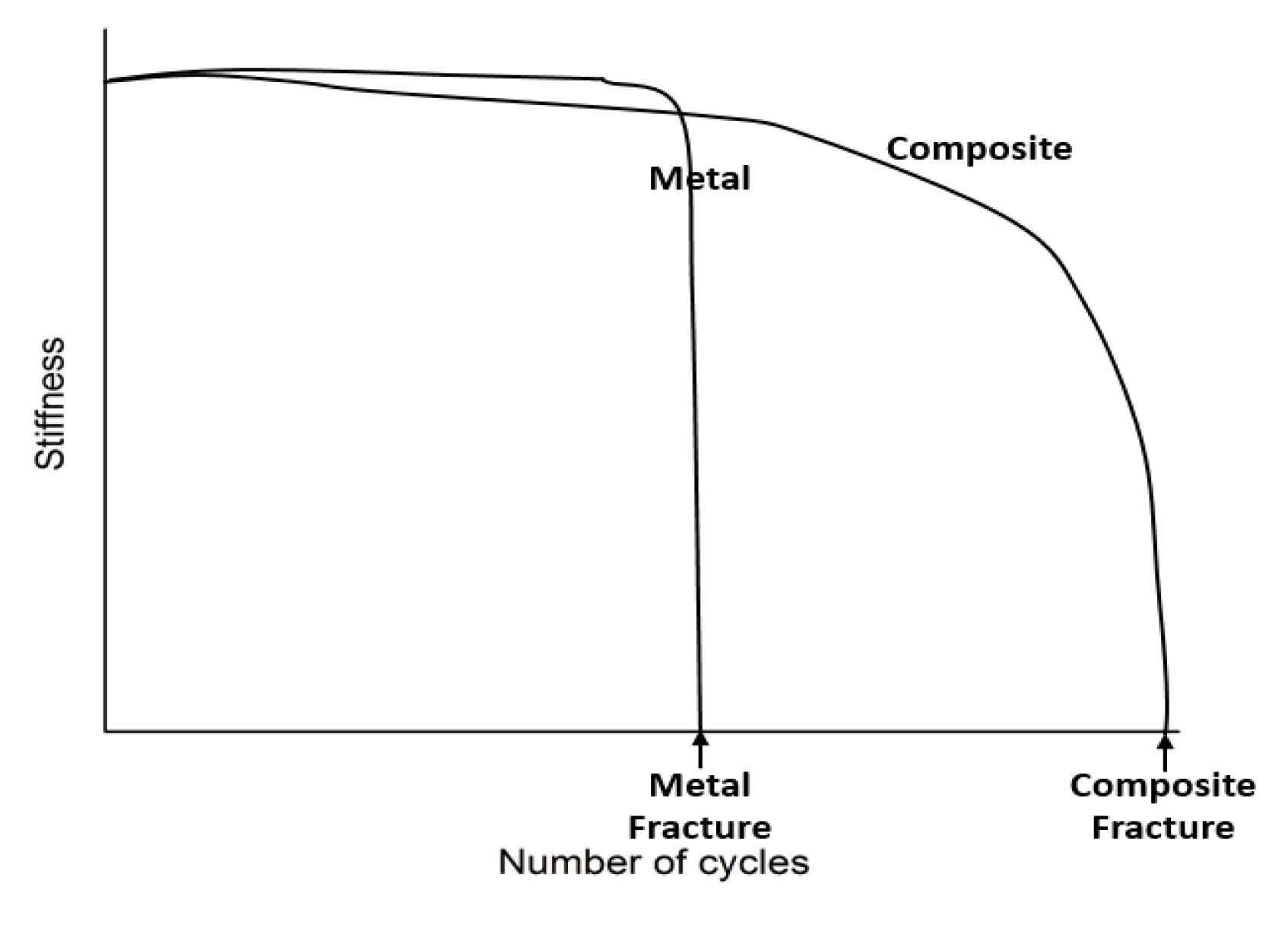


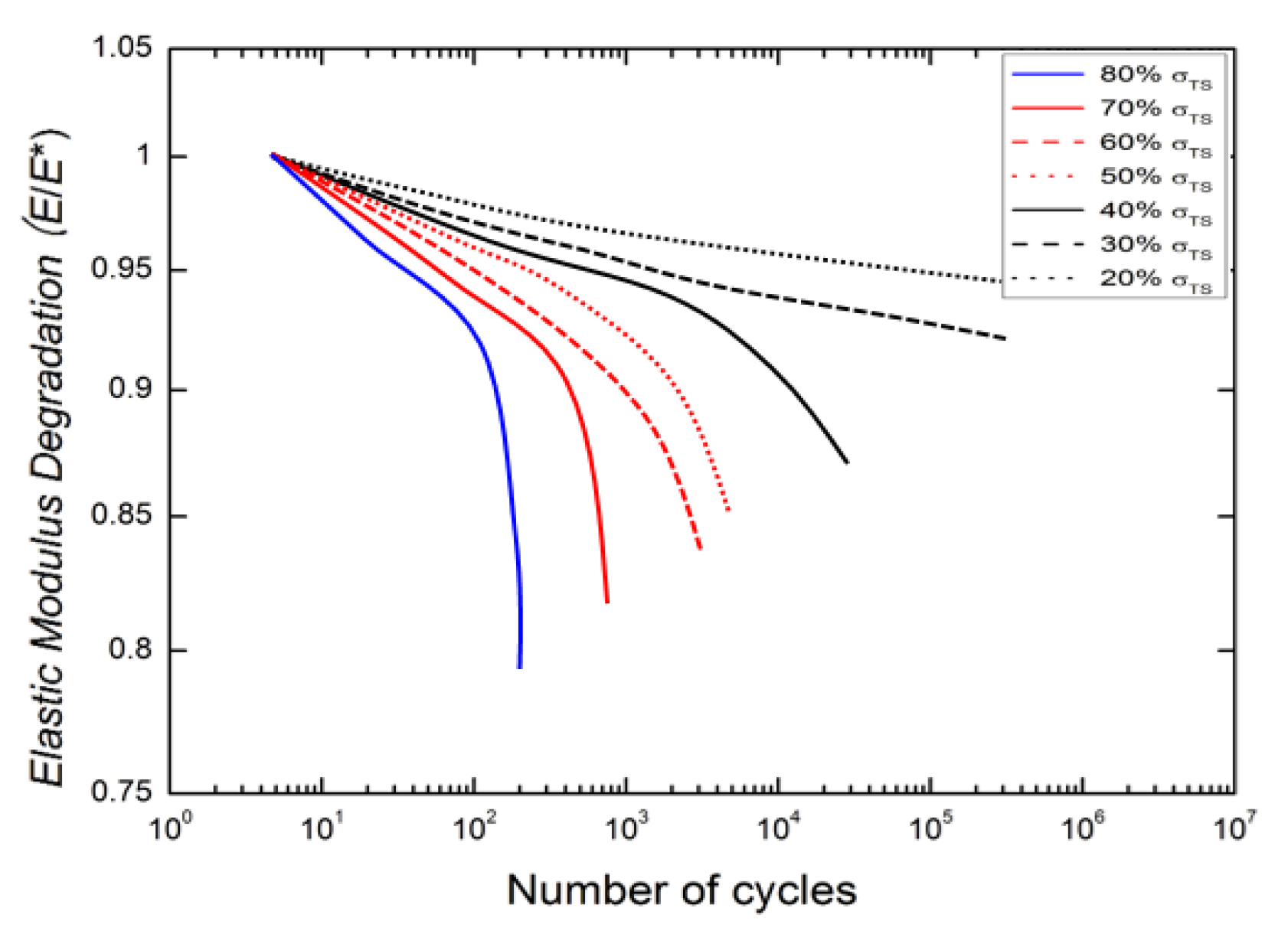



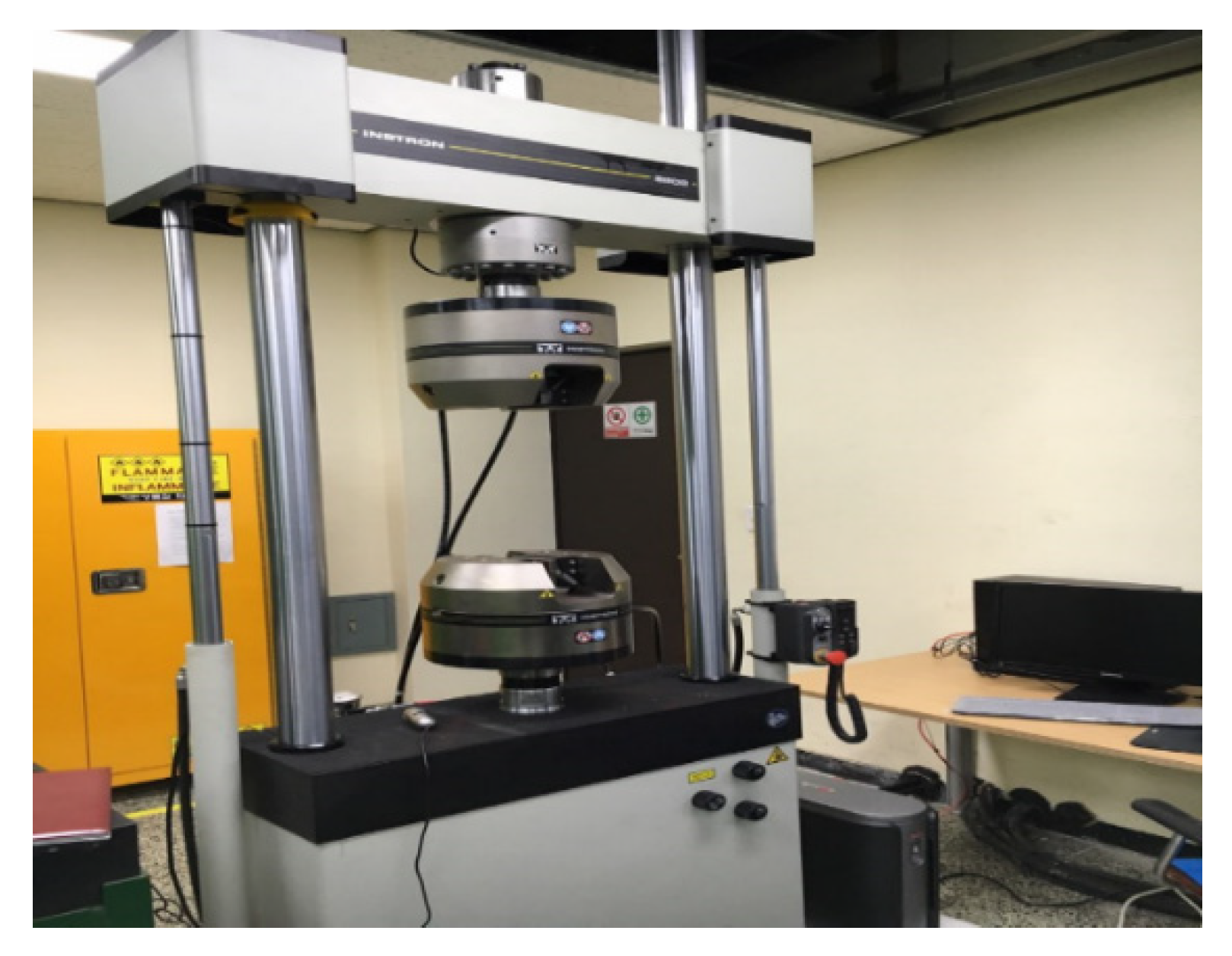




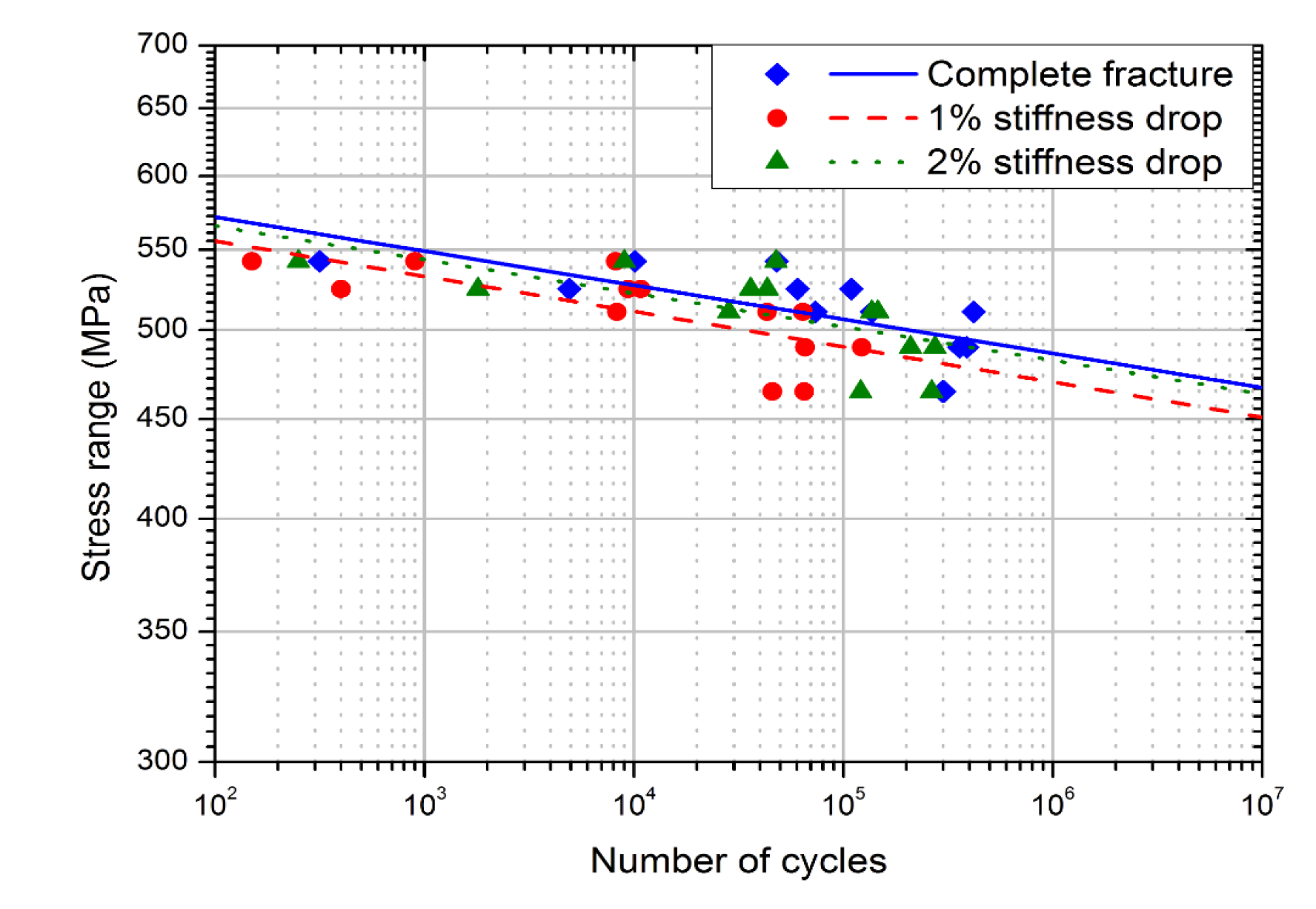
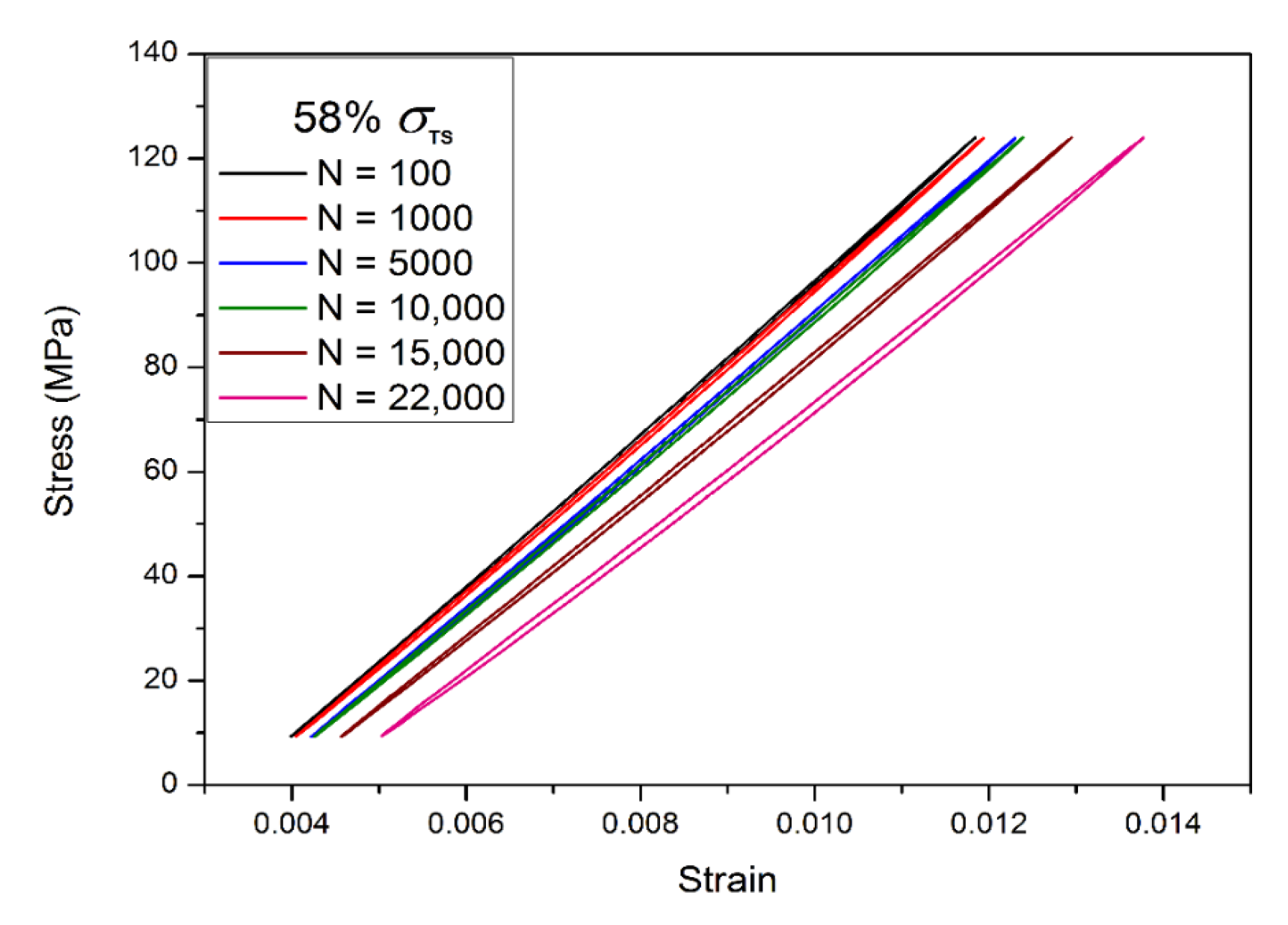



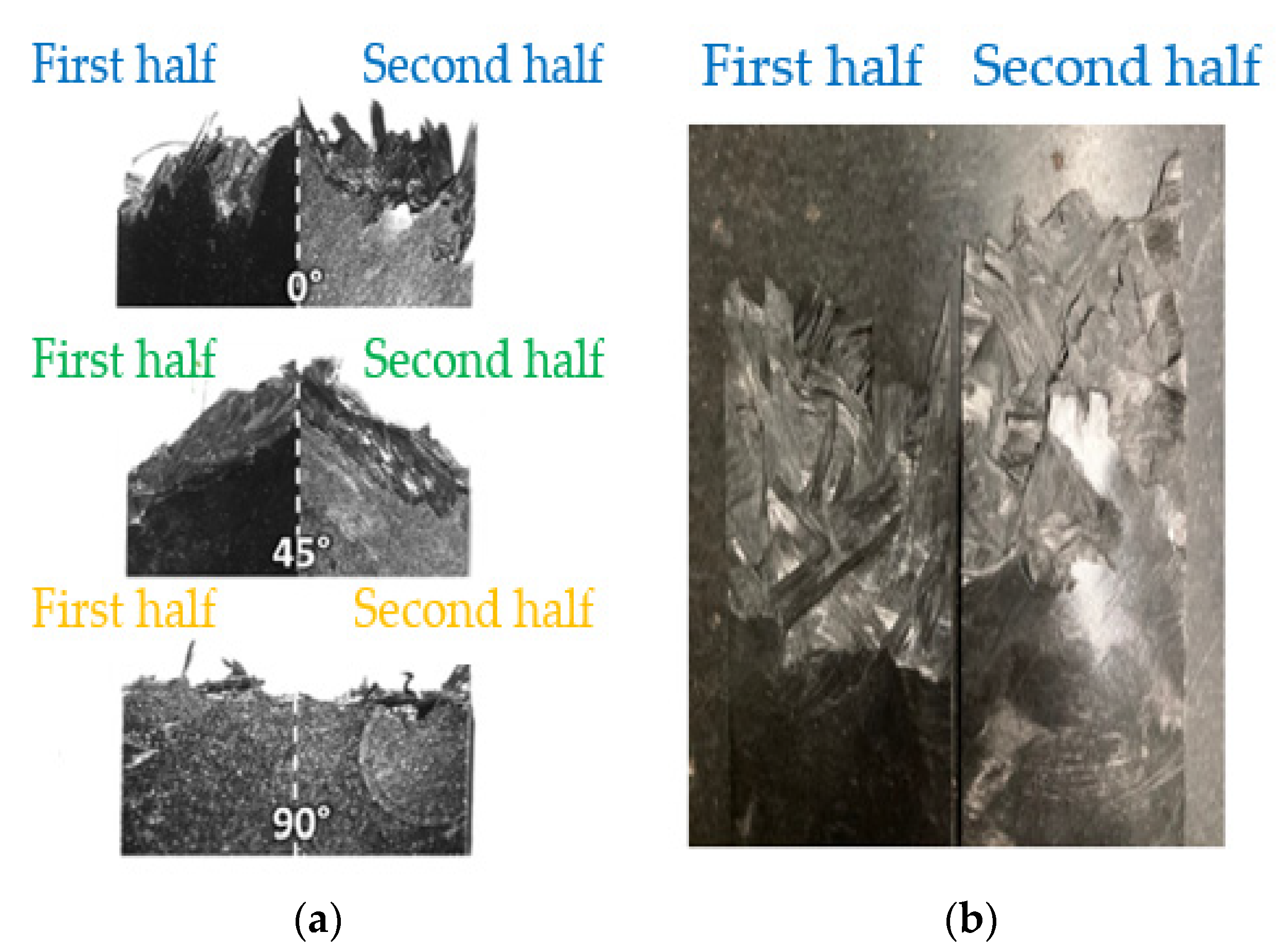




| Type of Test | Number of Test Specimens |
|---|---|
| Preliminary and exploratory | 6 |
| Research and development testing of components and structures | 12 |
| Design allowables data | 24 |
| Reliability data | 24 |
| Classification | Condition |
|---|---|
| Control mode | Displacement |
| Temperature | Room temperature |
| Constant head speed | 1% |
| Gauge length | 50 mm |
| C-SMC-Cut-35 | C-SMC-Cut-100 | C-SMC-In-Mold | CFRP | |||||
|---|---|---|---|---|---|---|---|---|
| No. of Case | Elastic Modulus (GPa) | Tensile Strength (MPa) | Elastic Modulus (GPa) | Tensile Strength (MPa) | Elastic Modulus (GPa) | Tensile Strength (MPa) | Elastic Modulus (GPa) | Tensile Strength (MPa) |
| Case1 | 29.9 | 206 | 32.4 | 233.4 | 28 | 201.7 | 50.8 | 676.8 |
| Case2 | 28.1 | 179 | 26.4 | 200.6 | 36.7 | 192 | 59.5 | 710.3 |
| Case3 | 29.2 | 215 | 30.6 | 207.7 | 23 | 159 | 55.9 | 658.4 |
| Case4 | - | - | 28 | 193.9 | - | - | 57.3 | 711.4 |
| Case5 | - | - | 26.6 | 216.3 | - | - | 58 | 671.7 |
| Case6 | - | - | 26.4 | 217.6 | - | - | 54.8 | 626.3 |
| Average | 29 | 200 | 28.4 | 211.6 | 29.3 | 184.3 | 56.1 | 675.8 |
| Stress | N(Cycles) | E(GPa) |
|---|---|---|
| 55% | 100 | 14.8 |
| 1000 | 14.6 | |
| 5000 | 14.3 | |
| 10,000 | 14.1 | |
| 15,000 | 13.9 | |
| 22,000 | 13.4 |
Publisher’s Note: MDPI stays neutral with regard to jurisdictional claims in published maps and institutional affiliations. |
© 2021 by the authors. Licensee MDPI, Basel, Switzerland. This article is an open access article distributed under the terms and conditions of the Creative Commons Attribution (CC BY) license (http://creativecommons.org/licenses/by/4.0/).
Share and Cite
Im, Y.C.; Kim, D.Y.; Lim, S.W.; Yoon, S.J.; Choi, C.H.; Kim, M.H. Fatigue Life Prediction for Carbon-SMC and Carbon-FRP by Considering Elastic Modulus Degradation. J. Compos. Sci. 2021, 5, 54. https://doi.org/10.3390/jcs5020054
Im YC, Kim DY, Lim SW, Yoon SJ, Choi CH, Kim MH. Fatigue Life Prediction for Carbon-SMC and Carbon-FRP by Considering Elastic Modulus Degradation. Journal of Composites Science. 2021; 5(2):54. https://doi.org/10.3390/jcs5020054
Chicago/Turabian StyleIm, Yeong Cheol, Dong Yeop Kim, Sang Won Lim, Sang Jae Yoon, Chi Hoon Choi, and Myung Hyun Kim. 2021. "Fatigue Life Prediction for Carbon-SMC and Carbon-FRP by Considering Elastic Modulus Degradation" Journal of Composites Science 5, no. 2: 54. https://doi.org/10.3390/jcs5020054
APA StyleIm, Y. C., Kim, D. Y., Lim, S. W., Yoon, S. J., Choi, C. H., & Kim, M. H. (2021). Fatigue Life Prediction for Carbon-SMC and Carbon-FRP by Considering Elastic Modulus Degradation. Journal of Composites Science, 5(2), 54. https://doi.org/10.3390/jcs5020054





